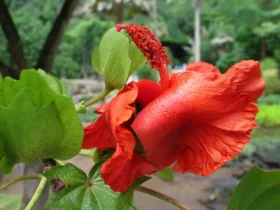Adding a touch of architectural grandeur to garden borders, Alcea rugosa, commonly known as Hollyhock, emerges as a robust biennial or short-lived perennial, gracing landscapes with its imposing stature and tall, resilient spikes. These spikes bear elegant, outward-facing, pale yellow flowers with funnel-like shapes, each accentuated by distinctive staminal columns. The floral display, a true spectacle, unfolds from late spring to the waning days of summer. The arrangement of the showy flowers wraps around the spike and commences its blooming journey from the lower reaches, gradually ascending upwards. The leaves, with their large size, deep lobes, and charmingly crinkled appearance, contribute to the plant’s character.
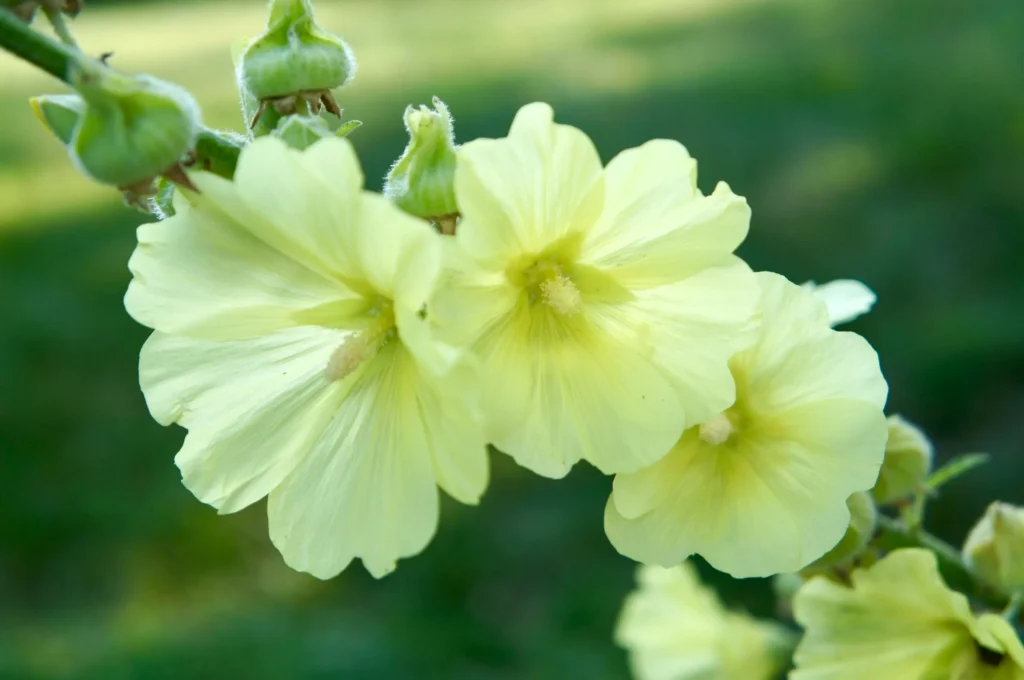
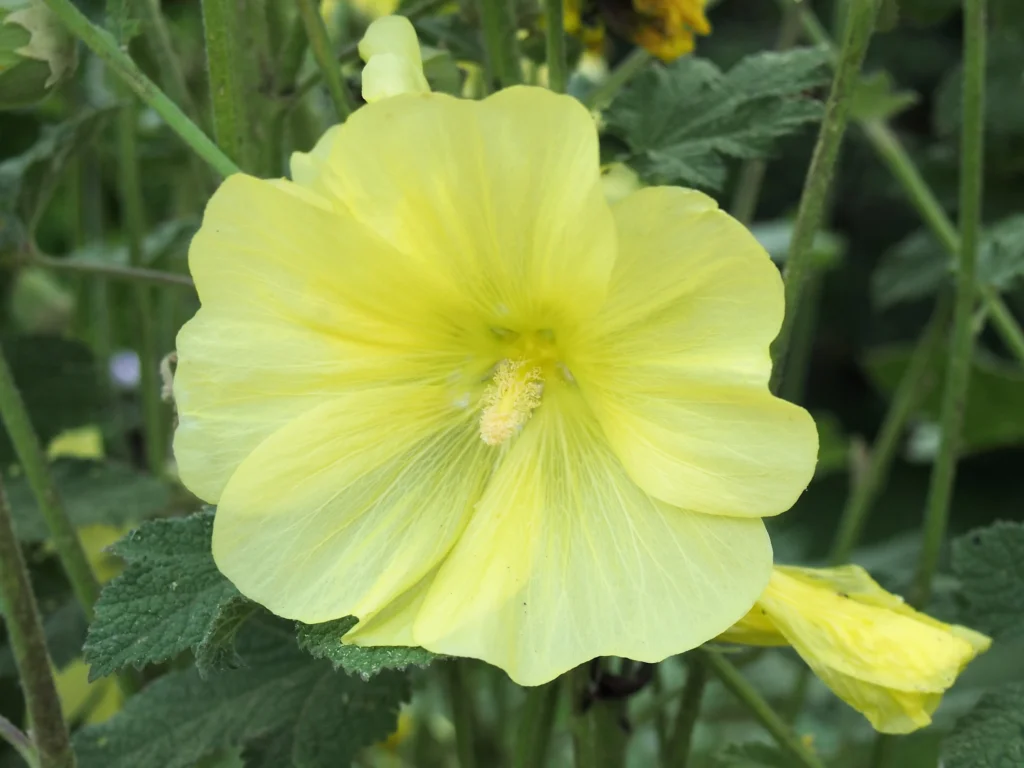
An exemplar of sturdiness, Alcea rugosa distinguishes itself by demonstrating heightened resistance to the blight known as hollyhock rust. A treasured presence in traditional gardens, Hollyhock thrives particularly well when positioned adjacent to walls, fences, or in the rear of garden borders.
This species is a vigorous grower, reaching heights of 4 to 6 feet (120-180 cm) and spreading to widths of 18 to 24 inches (45-60 cm). The self-seeding tendency of Hollyhocks is noteworthy, leading them to establish charming colonies within the garden over time.
Sun-loving by nature, Hollyhock prefers full sun exposure and flourishes in soils with average moisture levels that are well-drained. While it can tolerate a range of soil types, it does not fare well in overly wet conditions during winter.
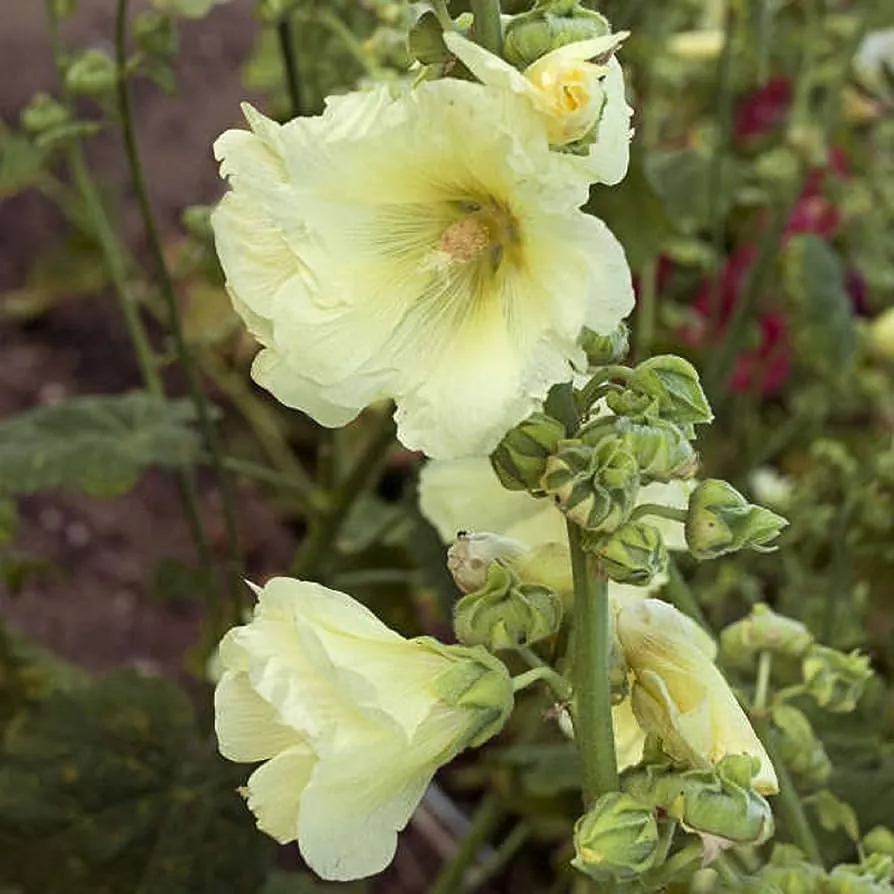
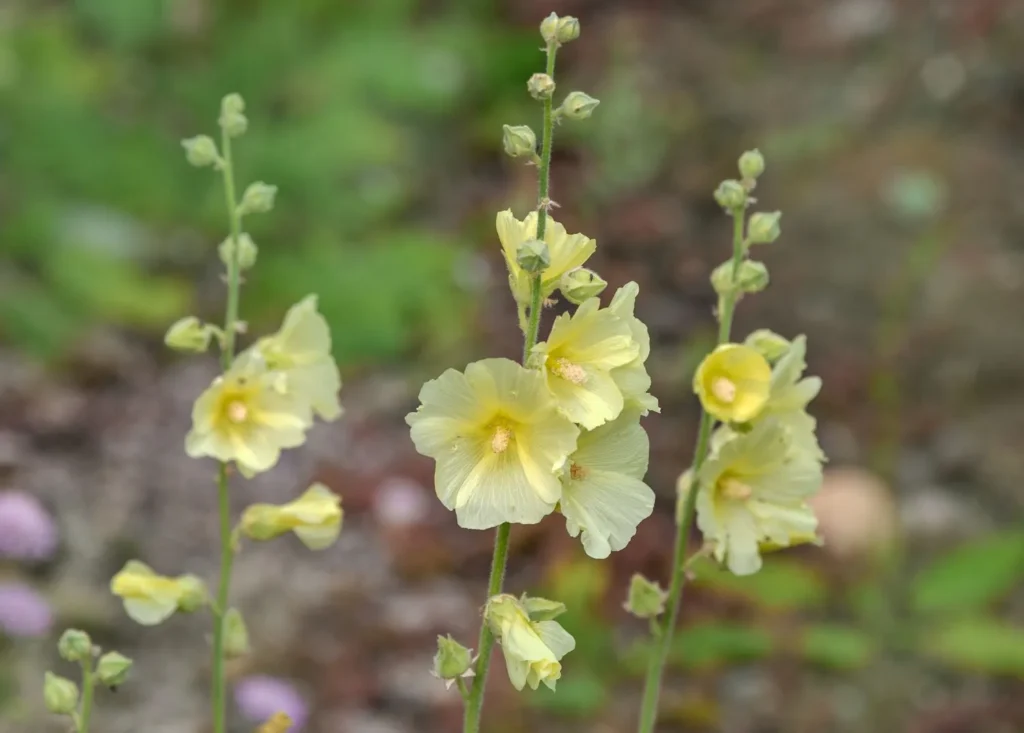
Cultivating Hollyhock is a straightforward endeavor, making it a welcome addition to various settings, including beds, borders, cottage gardens, and borders along walls. The flowers extend a cordial invitation to hummingbirds and butterflies, offering them nectar-rich havens.
While Hollyhocks are relatively resilient, they can fall prey to leaf spot and anthracnose. Nevertheless, their resistance to rust is commendable.
Propagation is easily accomplished through seed planting, making it an accessible choice for garden enthusiasts.
The roots of Alcea rugosa trace back to native regions such as Ukraine, Crimea, south European Russia, and the Caucasus. From these lands, it brings its enduring charm and presence to gardens across the world.
